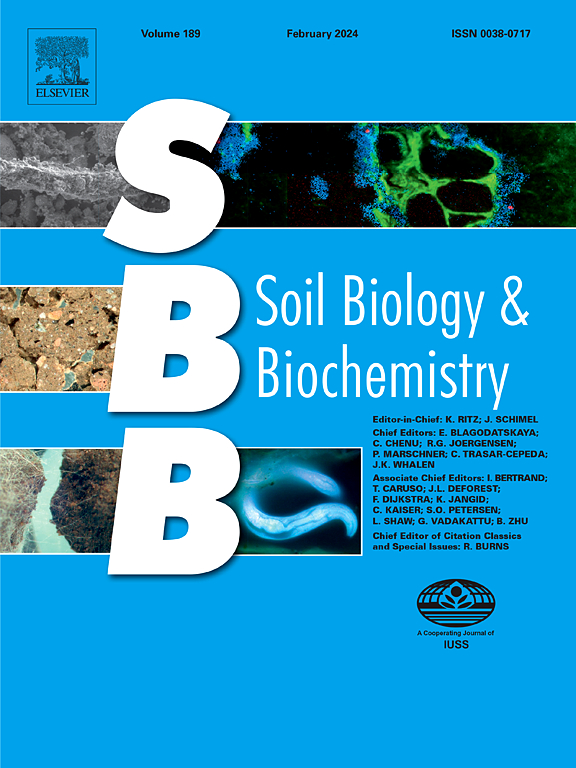Hidden decomposers: Revisiting saprotrophy among soil protists and its potential impact on carbon cycling
IF 9.8
1区 农林科学
Q1 SOIL SCIENCE
引用次数: 0
Abstract
Soil protists are increasingly recognized as key players in organic matter turnover, yet their role as direct decomposers (i.e., saprotrophs) remains underexplored compared to that of bacteria and fungi. Here, we synthesize ecological, physiological, and genomic evidence to highlight the potential of protists to actively decompose organic matter and influence soil carbon cycling. We distinguish two saprotrophic strategies within protists—lysotrophic (extracellular) and phagotrophic (intracellular)—with the latter being unique to protists among microbial decomposers. By directly ingesting particulate or dissolved organic matter, phagotrophic saprotrophic protists may bypass constraints associated with extracellular decomposition, potentially providing an advantage in breaking down recalcitrant substrates. In contrast, lysotrophic saprotrophy in protists involves the secretion of enzymes, similar to bacterial and fungal decomposers. We propose that integrating protist saprotrophy into conceptual and quantitative models of soil organic matter decomposition could address critical knowledge gaps. This integration involves employing functional genomics and functional ecology methodologies to determine, in vitro, the capacity of protists to function as saprotrophs, elucidate the genetic pathways underpinning saprotrophic activities, and assess, in situ, their direct contributions to organic matter decomposition processes. Ultimately, a clearer view of the organic matter decomposition capacities of soil protists will refine our understanding of microbially driven carbon fluxes.


隐藏的分解者:重新审视土壤原生生物的腐殖性及其对碳循环的潜在影响
土壤原生生物越来越被认为是有机质周转的关键角色,但与细菌和真菌相比,它们作为直接分解者(即腐养菌)的作用仍未得到充分研究。在此,我们综合生态学、生理学和基因组学的证据来强调原生生物积极分解有机质和影响土壤碳循环的潜力。我们在原生生物中区分了两种腐养策略——溶养(细胞外)和吞噬(细胞内)——后者是微生物分解者中原生生物所特有的。通过直接摄取颗粒或溶解的有机物,吞噬性腐坏性原生生物可以绕过与细胞外分解相关的限制,在分解顽固的底物方面具有潜在的优势。相比之下,原生生物的溶养腐坏涉及酶的分泌,类似于细菌和真菌的分解者。我们提出,将原生腐坏融入土壤有机质分解的概念和定量模型可以解决关键的知识空白。这种整合包括使用功能基因组学和功能生态学方法,在体外确定原生生物作为腐殖质的能力,阐明支持腐殖质活动的遗传途径,并原位评估它们对有机物分解过程的直接贡献。最终,对土壤原生生物有机物分解能力的更清晰认识将完善我们对微生物驱动的碳通量的理解。
本文章由计算机程序翻译,如有差异,请以英文原文为准。
求助全文
约1分钟内获得全文
求助全文
来源期刊

Soil Biology & Biochemistry
农林科学-土壤科学
CiteScore
16.90
自引率
9.30%
发文量
312
审稿时长
49 days
期刊介绍:
Soil Biology & Biochemistry publishes original research articles of international significance focusing on biological processes in soil and their applications to soil and environmental quality. Major topics include the ecology and biochemical processes of soil organisms, their effects on the environment, and interactions with plants. The journal also welcomes state-of-the-art reviews and discussions on contemporary research in soil biology and biochemistry.
 求助内容:
求助内容: 应助结果提醒方式:
应助结果提醒方式:


